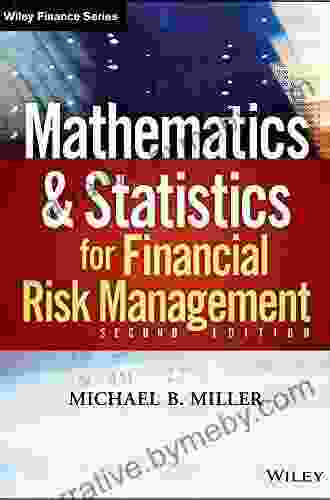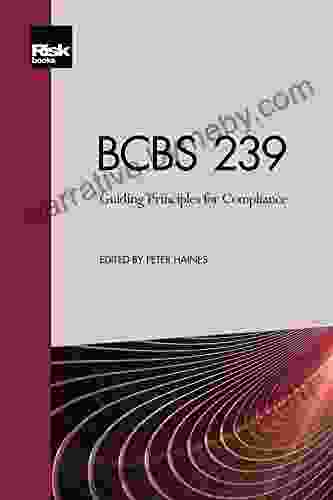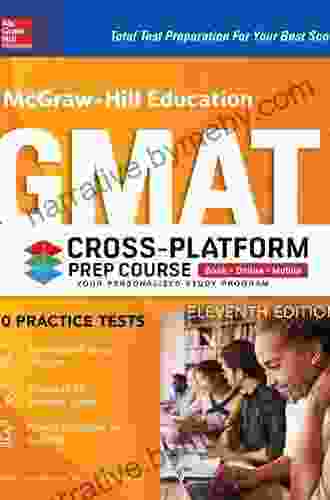Prospect Theory: A Comprehensive Guide to Understanding Risk and Ambiguity

Prospect Theory is a groundbreaking theory in behavioral economics that has revolutionized our understanding of how individuals make decisions under conditions of risk and ambiguity. Developed by Daniel Kahneman and Amos Tversky in the 1970s, Prospect Theory challenges the traditional assumptions of rational choice theory and provides a more realistic framework for understanding human decision-making.
Key Principles of Prospect Theory
Prospect Theory is based on several key principles:
4.6 out of 5
| Language | : | English |
| File size | : | 16822 KB |
| Text-to-Speech | : | Enabled |
| Screen Reader | : | Supported |
| Enhanced typesetting | : | Enabled |
| Print length | : | 517 pages |
| Lending | : | Enabled |
- Value Function: Prospect Theory proposes that individuals evaluate outcomes relative to a reference point, typically the status quo. Gains and losses are evaluated differently, with losses having a greater impact on decision-making than gains.
- Loss Aversion: Individuals are generally more sensitive to losses than gains. The pain of losing something is perceived as more intense than the pleasure of gaining the same amount.
- Gain-Loss Asymmetry: The value function is concave for gains and convex for losses. This means that individuals place more weight on losses near the reference point and less weight on losses further away from the reference point.
- Endowment Effect: Individuals tend to value things they already own more than things they do not own. This effect is due to the psychological attachment to possessions and the perceived cost of giving them up.
- Status Quo Bias: Individuals tend to prefer the status quo over a change, even if the change is objectively better. This effect is due to the perceived risk and uncertainty associated with change.
Applications of Prospect Theory
Prospect Theory has wide-ranging applications in various fields, including:
- Finance: Prospect Theory helps explain why investors tend to be risk-averse in the face of gains and risk-seeking in the face of losses. It also provides insights into the pricing of financial assets and the behavior of stock markets.
- Marketing: Prospect Theory can be used to design marketing campaigns that leverage the psychological principles of loss aversion and the endowment effect. By framing products and services in terms of gains and losses, marketers can influence consumer preferences and purchasing decisions.
- Public Policy: Prospect Theory can inform public policy decisions related to risk management, health care, and environmental protection. By understanding how individuals make decisions under uncertainty, policymakers can design policies that are more effective and less likely to lead to unintended consequences.
Implications of Prospect Theory
Prospect Theory has significant implications for our understanding of human decision-making:
- Bounded Rationality: Prospect Theory suggests that individuals are not perfectly rational decision-makers but are instead bounded by cognitive limitations and psychological biases. This has implications for the design of policies and institutions that rely on the assumption of rational choice.
- Context Dependence: Prospect Theory emphasizes the importance of context in decision-making. Outcomes are not evaluated in isolation but rather relative to a reference point. This means that the same decision may be made differently depending on the framing or presentation of the options.
- Behavioral Interventions: Prospect Theory provides insights into how to design behavioral interventions that nudge individuals towards making more optimal decisions. By understanding the psychological principles that influence decision-making, it is possible to create interventions that help people overcome their biases and make better choices.
Prospect Theory is a powerful and influential theory that has transformed our understanding of human decision-making under risk and ambiguity. By providing a more realistic framework for understanding how individuals evaluate outcomes and make choices, Prospect Theory has implications for a wide range of fields, including finance, marketing, public policy, and behavioral economics. By leveraging the insights from Prospect Theory, we can design better policies, interventions, and products that promote well-being and decision-making.
References
- Kahneman, D., & Tversky, A. (1979). Prospect theory: An analysis of decision under risk. Econometrica, 47(2),263-291.
- Tversky, A., & Kahneman, D. (1992). Advances in prospect theory: Cumulative representation of uncertainty. Journal of Risk and Uncertainty, 5(4),297-323.
- Kahneman, D. (2011). Thinking, fast and slow. New York: Farrar, Straus and Giroux.
4.6 out of 5
| Language | : | English |
| File size | : | 16822 KB |
| Text-to-Speech | : | Enabled |
| Screen Reader | : | Supported |
| Enhanced typesetting | : | Enabled |
| Print length | : | 517 pages |
| Lending | : | Enabled |
Do you want to contribute by writing guest posts on this blog?
Please contact us and send us a resume of previous articles that you have written.
 Book
Book Novel
Novel Page
Page Chapter
Chapter Text
Text Story
Story Genre
Genre Reader
Reader Library
Library Paperback
Paperback E-book
E-book Magazine
Magazine Newspaper
Newspaper Paragraph
Paragraph Sentence
Sentence Bookmark
Bookmark Shelf
Shelf Glossary
Glossary Bibliography
Bibliography Foreword
Foreword Preface
Preface Synopsis
Synopsis Annotation
Annotation Footnote
Footnote Manuscript
Manuscript Scroll
Scroll Codex
Codex Tome
Tome Bestseller
Bestseller Classics
Classics Library card
Library card Narrative
Narrative Biography
Biography Autobiography
Autobiography Memoir
Memoir Reference
Reference Encyclopedia
Encyclopedia Avinash K Dixit
Avinash K Dixit Callum Roberts
Callum Roberts Guillaume Pitron
Guillaume Pitron Robin Bayley
Robin Bayley Frank Muir
Frank Muir Ashu Dutt
Ashu Dutt Wayne Van Zyl
Wayne Van Zyl Helen Thompson
Helen Thompson Barbara Kennard
Barbara Kennard Ascencia Pharmacy Technician Exam Prep Team
Ascencia Pharmacy Technician Exam Prep Team Craig Halloran
Craig Halloran Aspen Matis
Aspen Matis Barry Glassner
Barry Glassner Ashley Evans
Ashley Evans Forrest Griffin
Forrest Griffin Sue Patterson
Sue Patterson Otegha Uwagba
Otegha Uwagba Beau Beery
Beau Beery Diane Miller Sommerville
Diane Miller Sommerville Baoshu
Baoshu
Light bulbAdvertise smarter! Our strategic ad space ensures maximum exposure. Reserve your spot today!

 Orson Scott CardUnlocking the Secrets of Financial Risk Management: A Comprehensive Guide...
Orson Scott CardUnlocking the Secrets of Financial Risk Management: A Comprehensive Guide... Felix CarterFollow ·19.3k
Felix CarterFollow ·19.3k Robert Louis StevensonFollow ·13.2k
Robert Louis StevensonFollow ·13.2k Eddie BellFollow ·16.4k
Eddie BellFollow ·16.4k Donovan CarterFollow ·18.6k
Donovan CarterFollow ·18.6k Arthur MasonFollow ·3.6k
Arthur MasonFollow ·3.6k Nikolai GogolFollow ·4.5k
Nikolai GogolFollow ·4.5k Aaron BrooksFollow ·15.9k
Aaron BrooksFollow ·15.9k Patrick HayesFollow ·13.6k
Patrick HayesFollow ·13.6k

 Ian McEwan
Ian McEwanWhy Didn't Anyone Say Anything? Uncovering the Hidden...
By [Author's...

 William Wordsworth
William WordsworthArthurian Legendarians: Faithless One - Part One – A...
In the realm of legendary tales, the...

 Corey Hayes
Corey HayesSSAT ISEE Prep Test: Arithmetic Review Flash Cards Cram...
Are you preparing for the SSAT or ISEE exam?...

 Robert Louis Stevenson
Robert Louis StevensonUnveiling the Essential Guide to Compliance: BCBS 239...
In the ever-evolving...

 Javier Bell
Javier BellJust Peachy: A Tale of Sweetness and Sassiness
Immerse yourself in a...

 Brent Foster
Brent FosterStep-by-Step Instruction Manual to Building a Real Estate...
Are you eager to embark on the...
4.6 out of 5
| Language | : | English |
| File size | : | 16822 KB |
| Text-to-Speech | : | Enabled |
| Screen Reader | : | Supported |
| Enhanced typesetting | : | Enabled |
| Print length | : | 517 pages |
| Lending | : | Enabled |









